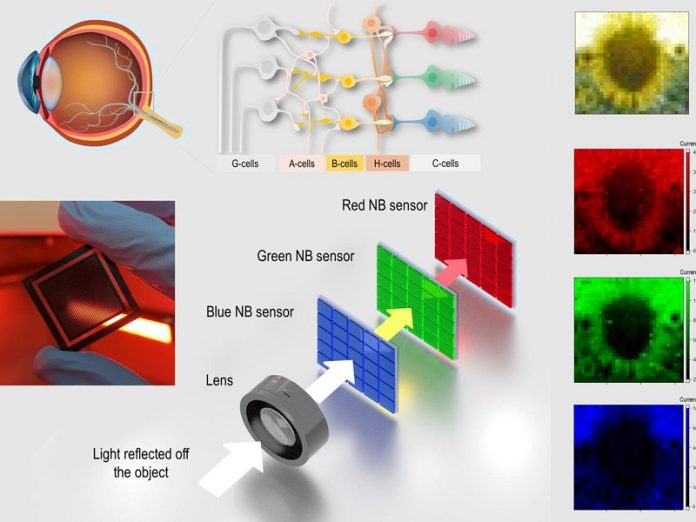
Scientists at Penn State have created a unique piece of technology that copies the way human eyes work.
Just like our eyes, this new device can capture and process images by mimicking the way our eyes detect different colors and how our brains process what we see.
The findings of their research, published in Science Advances, are very important.
They mark huge strides in the creation of new devices that use a certain kind of light-detecting material, known as perovskite.
The work was supported by seven grants from the U.S. National Science Foundation.
“Our design was inspired by nature. Our eyes contain special cells that are sensitive to red, green and blue light.
There’s also a network of nerve cells in our eyes that start to process what we see even before the information gets to our brain,” said Penn State researcher Kai Wang.
To recreate this in a device, the scientists used a new sensor array made from narrowband perovskite photodetectors.
These detectors act like the special color-sensitive cells in our eyes.
The scientists then connected this sensor to a neuromorphic algorithm, which acts like the network of nerve cells in our eyes, to process the information and create clear images.
Photodetectors are parts of cameras and other technologies that turn light energy into electrical signals. The photodetectors the scientists used can focus on individual parts of the light spectrum, like the reds, greens and blues that make up visible light.
“In this study, we found a new way to design perovskite material that only detects one color of light,” Wang said.
“We made three different kinds of this material. Each one is designed to only pick up red, green, or blue light.”
This new technology could be an alternative to the filters used in modern cameras. These filters can make images less clear and add to the cost and complexity of making cameras.
Also, because the new devices are made from perovskite materials, they can generate power as they take in light. This could lead to cameras that don’t need batteries.
“The structure of the device is like solar cells that use light to make electricity,” said Luyao Zheng, another Penn State researcher.
“When you shine a light on it, it will create a current. So, just like our eyes, we don’t need to apply energy to capture information from light.”
The research could spark more progress in the field of artificial retina technology. In the future, devices based on this technology could replace dead or damaged cells in the eyes to help restore sight, the scientists said.
And because the algorithm used in the device works like the nerve networks in our retinas, this research could also teach us more about how important these networks are to our vision.
Follow us on Twitter for more articles about this topic.



